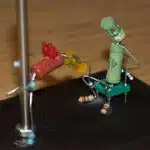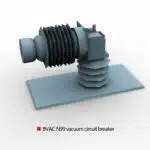Track lighting is a versatile lighting option that can add both style and functionality to any room. Whether you are looking to highlight specific features in your home or simply add additional sources of light, track lighting can provide the perfect solution. However, installing track lighting can be intimidating for those who lack experience in electrical work. In this article, we will discuss the necessary steps to successfully install track lighting and provide helpful tips to ensure a safe and efficient installation process.
Before beginning any electrical project, it is important to understand the basics of electrical wiring and safety precautions. When installing track lighting, it is crucial to first turn off power to the circuit you will be working on. Additionally, it is recommended to use a voltage tester to ensure that there is no current flowing through the wires before starting any work. Once you have taken the appropriate safety measures, installing track lighting involves positioning the tracks where you want them, attaching them with screws or brackets, connecting them together with connectors, and mounting the fixtures onto the tracks. By following these steps and taking proper precautions, anyone can successfully install track lighting in their home or business.
Safety Precautions Before Installation
Securing safety before installing track lighting is a crucial step to avoid any accidents or injuries. As an expert in lighting installations, it is important to emphasize the significance of grounding. Grounding your electrical system ensures that any excess electricity is immediately redirected to the ground instead of causing damage or harm. This is achieved by connecting all electrical circuits to a grounding rod or wire.
Another essential safety measure when installing track lighting is using personal protective equipment (PPE). PPE includes gloves, eye protection, and clothing that covers exposed skin. These items help safeguard you from potential hazards such as electric shock, burns, and cuts. Always ensure that your PPE fits properly, is in good condition, and specifically designed for electrical work.
Prioritizing safety measures like grounding and using PPE may seem time-consuming but are necessary steps in ensuring your well-being while installing track lighting. In addition to addressing these precautions, understanding electrical wiring basics will also help mitigate the risk of accidents or mistakes. The next section will cover this topic in detail, providing valuable insights for a safe and successful installation process.
Understanding Electrical Wiring Basics
When it comes to installing track lighting, it is important to have a basic understanding of electrical wiring. One of the most common wiring mistakes that people make when installing lighting fixtures is using the wrong type of wire. It is essential to use the correct gauge and type of wire for your particular installation, as using the wrong wire can cause electrical problems down the line.
Another common mistake is using too many wires in a single circuit. This can lead to overloaded circuits, which can be dangerous and cause fires. It is important to consult with a professional electrician if you are unsure about how many wires you need for your installation or if you are concerned about overloading your circuits.
In some cases, it may be necessary to hire a professional electrician to install your track lighting. This is especially true if you have limited experience with electrical work or if you are dealing with complex wiring systems. A professional electrician will ensure that your installation meets all safety codes and regulations, minimizing the risk of electrical problems in the future.
Before beginning any electrical work, it is essential to turn off power to the circuit you will be working on. This prevents accidents and ensures that no electricity is flowing through any part of the system while you are working on it. In our next section, we will discuss how to safely turn off power to your circuit before beginning your track lighting installation.
Turning Off Power To The Circuit
- Before beginning any electrical work, it is important to locate the circuit breaker and turn off the power to the circuit by switching it off.
- To locate the circuit breaker, it is helpful to check the main service panel and note which breaker corresponds to the circuit you are working on.
- Shutting off the power to the circuit can be done by flipping the corresponding circuit breaker off.
- After turning off the power, it is important to carefully test the circuit for current with a voltage tester.
- The voltage tester should be used to check all wires in the circuit for any electrical current.
- If the voltage tester does not detect any current, it is safe to proceed with the installation of the track lighting.
Locating Circuit Breaker
Before beginning any electrical installation, it is important to locate the circuit breaker and turn off power to the circuit. This step can evoke feelings of apprehension and uncertainty in homeowners, especially those who are unfamiliar with electrical work. However, as a lighting installation expert, I assure you that taking this step is crucial for your safety.
To locate the circuit breaker, start by checking the compatibility of your track lighting with your home’s electrical system. If you’re unsure about this, it may be best to hire a professional electrician to help you determine which circuit breaker controls the area where you want to install the track lighting. Once you have identified the correct circuit breaker, switch it off by flipping the corresponding switch or moving the lever to its “off” position.
Turning off power to the circuit is an essential step in ensuring that no electricity is running through the wires while installing track lighting. Failure to do so could result in serious injury or damage to your property. By following these guidelines and taking all necessary precautions, you can safely install track lighting and enjoy its benefits for years to come.
Shutting Off Power
Before proceeding with any electrical installation, it is imperative to turn off power to the circuit. As a lighting installation expert, I cannot stress enough the importance of this step in ensuring your safety and preventing damage to your property. Thus, checking connections and identifying the correct circuit breaker are crucial factors in turning off power.
Once you have located the correct circuit breaker, switch it off by flipping the corresponding switch or moving the lever to its ‘off’ position. Remember that restoring power should only be done once you have completed the installation and everything has been properly secured. This ensures that no electricity is running through the wires while working on them, reducing the risk of electrocution or fire.
In summary, shutting off power before any electrical installation should never be overlooked. Checking connections and identifying which circuit breaker controls a specific area can be challenging for some homeowners; thus, seeking assistance from a professional electrician is highly recommended. Remember that safety should always come first when dealing with electricity.
Testing For Current
After turning off the power to the circuit, it is essential to test for current before proceeding with any electrical installation. Testing equipment such as a voltage tester or multimeter can be used to check if there is any live current running through the wires. This step is crucial in ensuring electrical safety and preventing accidents such as electrocution or fires.
To test for current, first, ensure that the testing equipment is working correctly and set to the correct range. Next, touch one probe of the tester to a ground source such as a metal outlet box or green wire, then touch the other end of the probe to each wire you will be working on. If there is no reading on the tester, it means that there is no current flowing through those wires.
Testing for current should also be done periodically throughout an electrical installation project. This ensures that there are no unexpected changes in the circuit’s power status, which could lead to potential hazards. Always prioritize electrical safety by testing for current before and during any electrical installation project.
Remember, when dealing with electricity, safety should always come first. Testing for current is just one step towards ensuring that your electrical installation is safe and secure. Utilize proper testing equipment and follow all necessary precautions when working with electricity to prevent accidents and promote overall electrical safety in your home or workplace.
Using A Voltage Tester
As the saying goes, safety always comes first. Before beginning any electrical work, it is important to ensure that you have the proper tools and knowledge to do so safely. One crucial tool for installing track lighting is a voltage tester. This device helps you identify whether wires are live or not, preventing any accidents or electrocution during installation.
When selecting a voltage tester, it is essential to choose one that fits your specific needs and budget. There are two main types of testers: non-contact and contact testers. Non-contact testers use electromagnetic fields to detect voltage without touching the wire, while contact testers require physical contact with the wire. It is also important to regularly calibrate your voltage tester to ensure accurate readings.
During installation, it is important to take extra safety measures. Turn off power at the circuit breaker before working on electrical components and use caution when handling wires. If unsure about which wire is live, use a voltage tester to double-check before proceeding. Additionally, if encountering any issues during installation, troubleshooting techniques such as checking connections and testing with a voltage tester can help identify and resolve problems.
Using a voltage tester can greatly increase safety during track lighting installation. By selecting the right type of tester for your needs, regularly calibrating it, following proper safety measures during installation, and using troubleshooting techniques if necessary, you can successfully install track lighting in your space. The next step in this process is choosing the right track lighting system for your needs.
Choosing The Right Track Lighting System
After ensuring the safety of your electrical system, the next step in installing track lighting is determining the placement of the tracks. Track lighting can be used to highlight specific features in a room or provide general illumination. It is important to consider both the function and aesthetics of the space when deciding where to install the tracks.
Once you have determined the placement of your track lighting, you will need to choose the right type of track heads for your needs. Track heads are the fixtures that attach to the tracks and hold the light bulbs. There are various types of track heads available, including directional spotlights, pendant lights, and floodlights. Consider factors such as brightness level, beam angle, and color temperature when selecting your track heads.
Proper preparation of the installation area is crucial for a successful installation. Before beginning any work, make sure to turn off power at the circuit breaker. Next, clear out any obstructions or furniture from around where you plan to install your track lighting. This will allow you adequate space to work and ensure that you do not accidentally damage anything during installation. By carefully preparing your installation area before beginning work, you can ensure a smooth and safe process from start to finish.
Preparing The Installation Area
Before installing track lighting, it’s important to prepare the installation area. This involves choosing appropriate fixtures and covering exposed wires. By taking these steps, you can ensure a safe and efficient installation process.
When selecting fixtures for your track lighting system, consider the size of the space you’re illuminating and the desired level of brightness. There are many different types of track heads available, including adjustable, fixed, and pendant options. You should also think about the color temperature of the bulbs you’ll be using. Warmer hues may be more suitable for living spaces, while cooler tones work well in kitchens or work areas.
To keep your installation area safe, it’s essential to cover any exposed wires before proceeding with the installation process. This can be done using wire nuts or electrical tape. Additionally, make sure that all electrical connections are secure and that no wires are frayed or damaged.
In order to avoid potential hazards during installation, it’s important to take the necessary precautions when preparing your space for track lighting. By choosing appropriate fixtures and covering exposed wires, you can ensure a safe and successful installation process. In the next section, we’ll discuss how to measure and mark the location for your track lighting system without running into any issues along the way.
Measuring And Marking The Location
Measuring and marking the location for track lighting installation is crucial to ensure the track is level and in the correct position. To begin, it’s essential to locate the electrical box and determine if it’s compatible with track lighting installation. If not, a new electrical box should be installed. Next, use a stud finder to locate ceiling joists or studs that will support the weight of the track lighting. Mark both ends of each joist with a pencil.
Once you’ve located the joists, measure accurately to mark where you’ll place the track lighting. A common mistake to avoid is measuring too close to an adjacent wall or ceiling edge, as this may not provide adequate space for light placement. Another common error is failing to measure straight across from one mark on a joist to another mark on an adjacent joist. This can result in unevenly spaced or crooked tracks.
To ensure measuring accuracy, use a level and chalk line to create straight lines for your marks. A chalk line makes it easy to create long, straight lines across multiple joists or studs. It’s also important to double-check your measurements before making any cuts or drilling any holes in the ceiling.
- Use a stud finder to locate ceiling supports
- Mark both ends of each joist with a pencil
- Measure accurately using a level and chalk line
- Double-check measurements before cutting or drilling
The next step in installing track lighting is mounting the electrical box securely in place. Before moving on, ensure that all markings are accurate and aligned correctly with your chosen design plan. By taking these necessary precautions during this early stage of installation, you’ll save time and prevent costly mistakes later on.
Mounting The Electrical Box
Electrical box placement is a crucial step in installing track lighting. First, determine the location of the electrical box by measuring and marking it on the ceiling. The box should be centered over the area where you want to install your track lighting.
Next, cut a hole in the ceiling that is slightly smaller than the electrical box using a drywall saw. Insert the electrical box into the hole and secure it by tightening its screws against the sides of the ceiling joists. Make sure that it is flush with the surface of the ceiling.
Anchoring the box securely is essential to ensure that your track lighting is safe and stable. If there are no nearby joists for support, use toggle bolts or other appropriate fasteners to anchor it to the ceiling. Once you have installed your electrical box, you can proceed with installing your track lighting by following our step-by-step guide.
Installing The Track
Installing the track is a crucial step in setting up your track lighting. The track holds the light fixtures and connects them to the power source. To begin, you need to decide on the type of track you want, whether it is a straight or curved one. When choosing a track, consider the length of the area where you want to install it and its design.
Once you have decided on the track, it’s time to adjust its height. Ensure that you leave enough space between the ceiling and the track so that there is room for air circulation. If you are installing it in an area with tall people, make sure that it is not too low to avoid bumping into it. You can use screws and anchors to mount brackets onto the ceiling before attaching the track.
Choosing the right bulbs for your track lighting is essential as this helps determine how bright or dim your room will be. Bulbs come in different colors, so pick one that complements your décor. Additionally, consider their wattage as this impacts their energy consumption and lifespan. Once you have installed your track lighting and adjusted its height, proceed to connect the tracks together using connectors or joiners.
- Align each of the tracks correctly.
- Tighten all screws with precision.
- Use a level tool when adjusting heights.
- Choose LED bulbs for more energy efficiency
Connecting The Tracks Together
Now that you have identified and marked the location of your track lighting, it’s time to connect the tracks together. The first thing you need to do is make sure that your track lighting compatibility is correct. You don’t want to waste time and money on incompatible tracks. Review the manufacturer’s instructions carefully, as some tracks will not be compatible with each other due to differences in size or shape.
Once you have verified that the tracks are compatible, align them properly. Start by placing one end of the track against the ceiling, ensuring that it is flush against the surface. Check that it is level using a spirit level before attaching it securely to the ceiling using screws and anchors. Then, take your second track section and connect it to the first one by sliding its end into the groove of the other track until they click into place.
After securing both sections together, test their connection by gently tugging on them to ensure they are stable. If you find any unsteady parts, adjust them accordingly until everything feels secure. Remember that proper track alignment is critical for safety reasons, as an improperly installed track could fall off and cause injury or damage. With this step completed successfully, we can now move on to installing fixtures onto our new track lighting system!
Installing The Fixtures On The Track
Now that the track is secured in place, it’s time to install the fixtures. Before anything else, make sure that you have all the fixtures you need for your desired layout. It’s recommended to lay out the fixtures on the track before installing them to see if any adjustments need to be made.
To install a fixture, simply slide it onto the track and twist it until it clicks into place. Some fixtures may require additional screws or clips for added security, so refer to the manufacturer’s instructions for guidance. Continue installing all of your fixtures until your desired layout is achieved.
Once all of your fixtures are installed, you can begin customizing their layout by adjusting their position along the track. This will allow you to direct light where it’s needed most and create different lighting effects in each room. Additionally, many track lighting systems come with dimmers that allow you to adjust brightness levels according to your needs and preferences. Overall, adjusting brightness and customizing layout are important steps in creating a beautiful and functional lighting system for any space.
As important as installing the fixtures themselves is directing them towards where they’re needed most. Adjusting direction is a crucial step in making sure that they’re illuminating exactly what needs illumination – whether it’s a piece of artwork or a reading nook – without creating glare or hotspots. With an adjustable track system, this can easily be done by hand or with specialized tools made specifically for this task.
Adjusting The Direction Of The Lights
As you stand back and admire your newly installed track lighting, you may notice that the direction of the lights needs to be adjusted. This is a common issue that can easily be resolved with a little adjustment of the light angle. Before making any adjustments, it’s important to identify which lights need to be repositioned and in what direction.
To adjust the light angle, first turn off the power to the track lighting system by flipping the switch on your circuit breaker panel. Next, use a ladder or step stool to reach each individual light fixture. Loosen the set screw on the side of the fixture with a small screwdriver and adjust the direction of the light as needed. Once you’ve made all necessary adjustments, tighten the set screws back into place.
When it comes to track light placement, it’s important to consider both function and aesthetics. If you’re using track lighting for task lighting purposes, such as over a kitchen island or reading nook, make sure that each fixture is positioned in a way that provides adequate illumination without causing any glare or shadows. For aesthetic purposes, consider playing around with different angles and heights to create an interesting visual display.
With these tips in mind, adjusting the direction of your track lighting fixtures should be a breeze. Once you’ve achieved your desired results, don’t forget to turn on the power and enjoy your newly illuminated space! In order to ensure everything is working properly before fully enjoying your new installation however, it’s important to next test your lighting system thoroughly.
Testing The Lighting System
After adjusting the direction of the lights, it’s time to test the lighting system. Testing is an essential part of the installation process as it ensures that everything is working correctly. There are various testing methods that you can use to check if your track lighting is functioning correctly.
One popular testing method is using a voltage tester. This tool helps you determine if there is any power flowing through your track lighting system. A voltage tester measures the electrical potential difference between two points in a circuit, and it can help you identify any issues with your wiring or connections.
Another testing method involves turning on the lights and checking for any flickering or dimming. Flickering lights may indicate a problem with the connection or wiring, while dimming lights may be due to low voltage or faulty bulbs. If you notice any issues, troubleshoot them before proceeding with the installation.
Troubleshooting common issues can save you time and money in the long run. One tip when troubleshooting your track lighting system is to check all connections for loose wires or corroded contacts. You should also ensure that all bulbs are properly seated and secured in their sockets. By following these troubleshooting tips, you can fix most issues without having to hire an electrician.
As you move forward with installing your track lighting, remember to test your system thoroughly and troubleshoot any problems that arise promptly. With proper testing and troubleshooting techniques, you can ensure that your track lighting works correctly for years to come.
Troubleshooting Common Issues
If you installed your track lighting properly but it’s not as bright as you expected, dim lighting can be caused by several issues. One of the most common causes is the type of light bulbs used. Make sure to use the correct wattage and type of bulb recommended for your track lighting system. It’s also possible that one or more bulbs are burned out, so check all the bulbs and replace any that are not working.
Another issue that can cause dim lighting is a problem with the power source. Check if there are any loose connections in your electrical wiring, or if there’s any damage to your circuit breaker. If you’re not comfortable working with electrical wiring, consult a licensed electrician to help you troubleshoot and fix this issue.
Loose connections between the track heads and rail can also cause dim lighting or even flickering lights. Check each connection point and make sure they’re securely fastened. If you find any loose connections, tighten them using a screwdriver or pliers.
Troubleshooting Common Issues:
- Dim Lighting
- Check light bulb wattage and type
- Replace any burnt-out bulbs
- Fixing Loose Track Connections
- Check each connection point
- Tighten any loose connections using a screwdriver or pliers
If none of these troubleshooting tips solve your dim lighting issue or loose connection problem, it’s best to consult a professional for further assistance. Remember to always prioritize safety when dealing with electrical wiring and equipment. In the next section, we’ll discuss some maintenance and cleaning tips to keep your track lighting system in top condition.
Maintenance And Cleaning Tips
Now that we have covered how to troubleshoot common issues with track lighting, let us move on to the maintenance and cleaning tips for your new installation. It is crucial to remember that regular cleaning of your track lights not only ensures their longevity but also maintains their brightness and overall performance. However, it is equally important to use the right cleaning techniques and products to avoid damaging the delicate components.
To clean your track lighting, start by turning off the power supply and removing any bulbs or shades. Next, use a soft-bristled brush or dusting tool to gently remove any dust or debris from the surface. For more stubborn stains, you can use a mild soap solution or a mixture of vinegar and water applied with a soft cloth. Avoid using abrasive cleaners, solvents, or excessive water as they may cause damage.
When it comes to choosing cleaning products for your track lighting, it is recommended to use non-abrasive and non-corrosive solutions that are safe for delicate surfaces such as glass and metal. Some of the popular brands include Windex Multi-Surface Cleaner, Zep Foaming Glass Cleaner, and Simple Green All-Purpose Cleaner. Always read the manufacturer’s instructions before using any product on your lighting fixtures.
In conclusion, proper maintenance and regular cleaning are essential for preserving the quality of your track lighting installation. By following these simple tips on cleaning techniques and selecting recommended products, you can ensure that your lights shine bright for years to come. Remember to approach this task with care and gentleness so as not to cause damage – after all, maintaining these fixtures will keep them looking great while also enhancing their functionality!
Conclusion
In conclusion, track lighting installation may seem daunting, but with the right tools and knowledge, it can be a rewarding DIY project. Remember to always prioritize safety precautions before starting any work on electrical systems. Understanding the basics of electrical wiring, turning off power to the circuit, and using a voltage tester are crucial steps in ensuring a successful installation.
Choosing the right track lighting system and adjusting the direction of the lights can enhance the overall aesthetics of your space. Testing the lighting system and troubleshooting common issues will help you avoid potential problems down the road. Don’t forget about maintenance and cleaning tips to keep your lighting fixtures looking brand new for years to come.
As a seasoned expert in lighting installation, I encourage you to take on this project with confidence. With these steps in mind, you’ll be able to create an illuminated space that is both functional and aesthetically pleasing. So go ahead, let your creativity shine through and light up your world with track lighting!
Image Credits
- “As a protest Tracks decided to look away from the camera. He claimed the airport did not have appropriate light for his paint job.” by colorblindPICASO (featured)


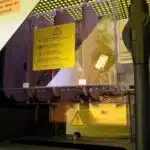

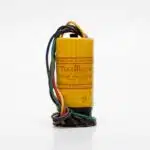




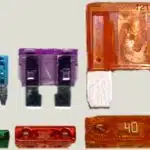
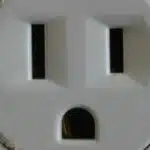







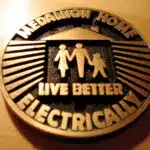
![How To Replace A Single-Pole Wall Switch 19 '... All in all it's just another [switch] in the wall.' ...](https://green-life.blog/wp-content/uploads/2023/05/17xmP5qMtVjq-150x150.jpg.webp)



